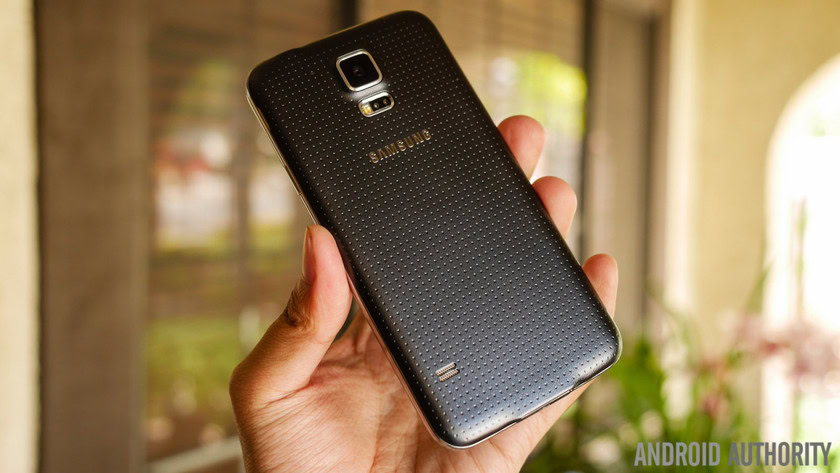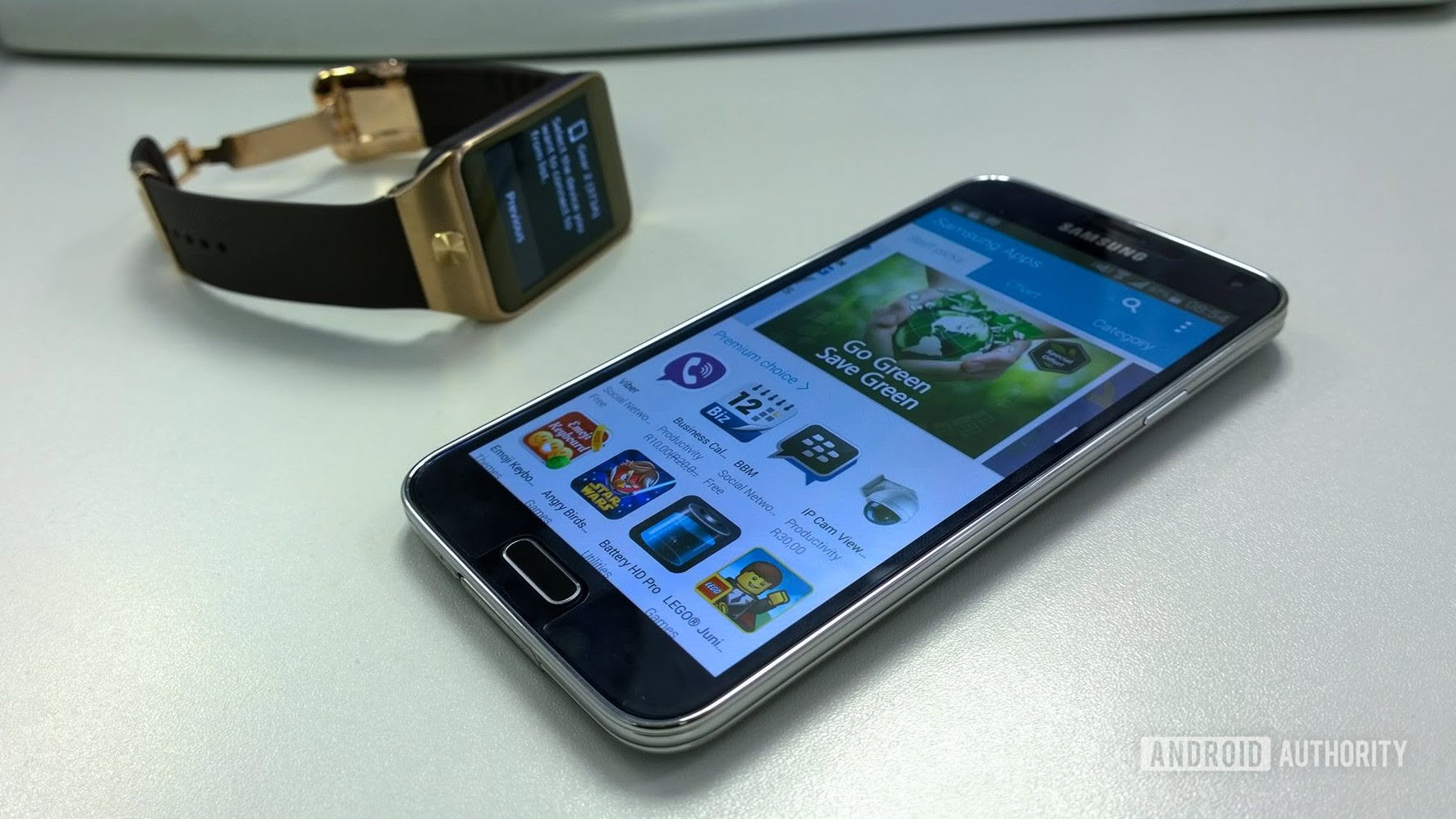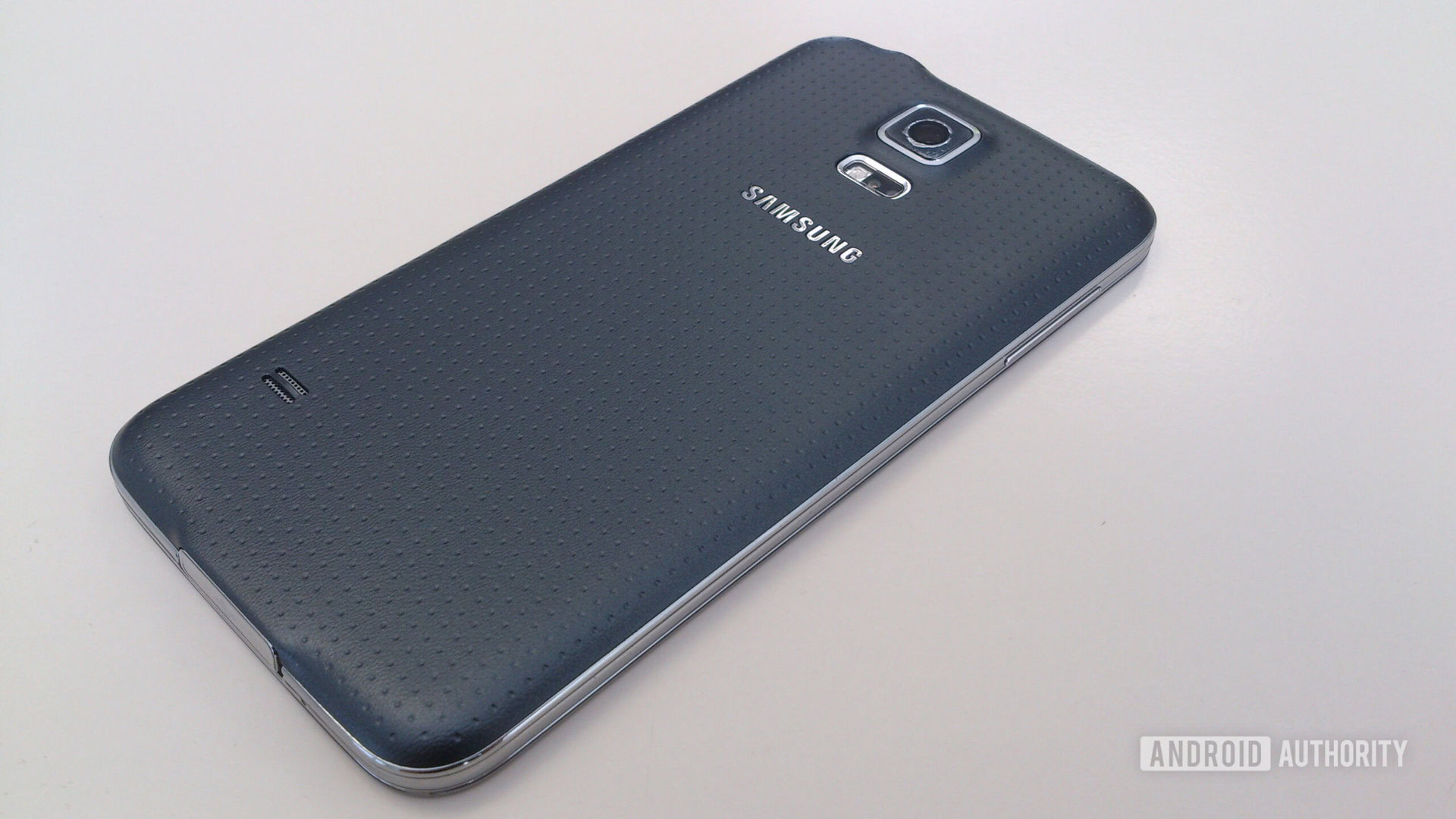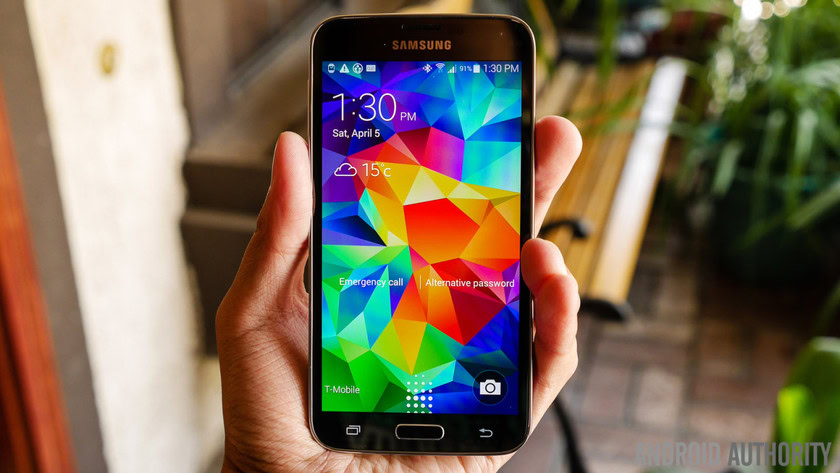Affiliate links on Android Authority may earn us a commission. Learn more.
It's been 10 years since my love-hate relationship with the Galaxy S5
Published onApril 13, 2024

2014 was undoubtedly the best year for smartphones in my book; excellent phones like the HTC One M8, LG G3, and OnePlus One all launched that year. And this week marks the tenth anniversary of perhaps the best of the best Android phones of 2014 — the Samsung Galaxy S5.
I was fortunate enough to spend a couple of weeks with a review unit back when I was starting out in the tech journalism industry. At the time, I had a love/hate relationship with the Galaxy S5, although it was definitely more love than hate. Let me rewind the time machine and take you back to another era.
Did you ever own a Samsung Galaxy S5?
Samsung Galaxy S5: Back to basics

Perhaps the most noticeable thing when first booting up the Galaxy S5 was how Samsung dialed its bulky interface back in a noticeable way. With its fifth-generation S flagship, the company delivered a more restrained approach to TouchWiz, steering clear of garish extras enabled by default. This was a big deal as Samsung really went overboard with the gimmicks and software bloat on the Galaxy S4, specifically.
It’s not like I didn’t like TouchWiz at first, either. I thought the Galaxy S3’s UX, with its green and blue hues and nature-inspired touch sounds, was pretty cool and unique at the time of its launch. But I grew to despise this user experience following the S4’s release, especially because you couldn’t escape those system sounds owing to Samsung’s popularity at the time and everyone keeping their phone’s default system sounds on. Even now, those “bloop bloop” water ripple sounds irritate me when I hear them.
Then there were the extra Galaxy S4 features enabled out-of-the-box, like scrolling pages with a tilt of your phone or air gestures (think a rudimentary version of Google’s Pixel 4 XL Motion Sense). Some of these were still available on the S5, but most of them were disabled by default. Thank goodness!
The Galaxy S5 saw Samsung abandon its strategy of throwing features against the wall to see what sticks.
This bloated approach to Android skins had also manifested itself in performance issues, especially in the months and years after the S4’s release. Yes, long-term performance had been a concern for every Android OEM in 2013, but this was acutely felt on Touchwiz compared to LG’s and HTC’s skins. So, I was glad to see the Galaxy S5 taking things down a notch.
My favorite thing about the S5, though? It had to be the camera. This was the first major phone with real-time HDR technology, quickly combining exposures to deliver a clear, sharp HDR shot. That sounds like a pedestrian feature for modern camera phones, but HDR was still in its infancy at the time. In fact, I remember several phones after the S5 that still exhibited ghosted images or took a while to process their HDR image. The Galaxy S5 may have been the first phone I used where I felt comfortable with the HDR enabled by default.
That’s not to say its photos were flawless, though. The Galaxy S5 camera still suffered from Samsung’s overly saturated colors. Highlights were also frequently blown out, while noise was visible in the shadows without having to zoom in. However, this was still one of the best camera phones at the time, which shows how far the industry has progressed since then.
The Galaxy S5 also stood out thanks to its IP67 rating, being the first mainline Galaxy S phone with water resistance. I was pretty pumped to see this feature at the time, especially after using the Xperia Z and Motorola Defy series a year or two earlier. I could have done without the plug for the micro-USB port, though, as these types of seals wore down over time. The phone also offered microSD card support and a removable battery, making it a tantalizing proposition for enthusiasts.
By no means a perfect Galaxy flagship

One of the most divisive aspects of the Galaxy S5 was its dimpled plastic back. Loads of people hated it, but I was mostly indifferent towards it. Mercifully, the back had a matte-like feel rather than the cheap shiny plastic seen on the Galaxy S4, but I somehow expected something softer or rubbery. This design also came at a time when HTC boasted a metal back and LG debuted an LG G3 variant in leather. Either way, the Galaxy S5’s rear cover was an improvement over the S4’s shiny and slippery plastic.
But the biggest issue I had with the Galaxy S5 was that awful fingerprint scanner. This was a swipe-based scanner that required you to swipe downward on the home button. My unit came in a few months after I had reviewed the iPhone 5s, and I thought Samsung’s scanner was a massive downgrade in comparison. People forget that Apple led the way for intuitive fingerprint unlock and that Android OEMs didn’t have an adequate response for almost a year. In fact, the HUAWEI Mate 7, which I reviewed in early 2015, was the first Android phone I used that had a great fingerprint scanner.
This was also the first Galaxy flagship phone with a heart-rate scanner positioned just below the rear camera. The scanner required you to stand perfectly still, which isn’t exactly ideal if you’re a runner or cyclist. At launch, the tech only worked with the S Health app, too. Even back then, I thought a fitness tracker was the way to go if you really wanted heart-rate tracking.
Was this the Galaxy S series at its innovative best?

The Samsung Galaxy S5 is one of the best examples of Samsung listening to its audience, and enthusiasts in particular. Between the lighter, more performant TouchWiz skin, embracing HDR photography as the norm, and that triple threat of IP67/removable battery/microSD slot, this was definitely an upgrade over the Galaxy S4. In fact, we feel this was the second-best Galaxy S series phone of all time in our all-time Galaxy S series rankings.
Samsung’s 2014 flagship phone had its fair share of weaknesses, though, such as that awful fingerprint scanner, a sketchy heart-rate monitor, and a design that lagged behind rivals at the time. Overall, though, this was an impressive device that showcased a Samsung that wasn’t afraid to embrace everything that made Android unique.
The Galaxy maker would go on to take a wildly different path with 2015’s Galaxy S6, opting for a premium design and iPhone-like pricing. Unfortunately, this came at the expense of features like water resistance, microSD card support, wireless charging, and a removable battery. It really makes me wonder what Samsung’s phones would look like today if the company stuck to the path trodden by the Galaxy S5 10 years ago.